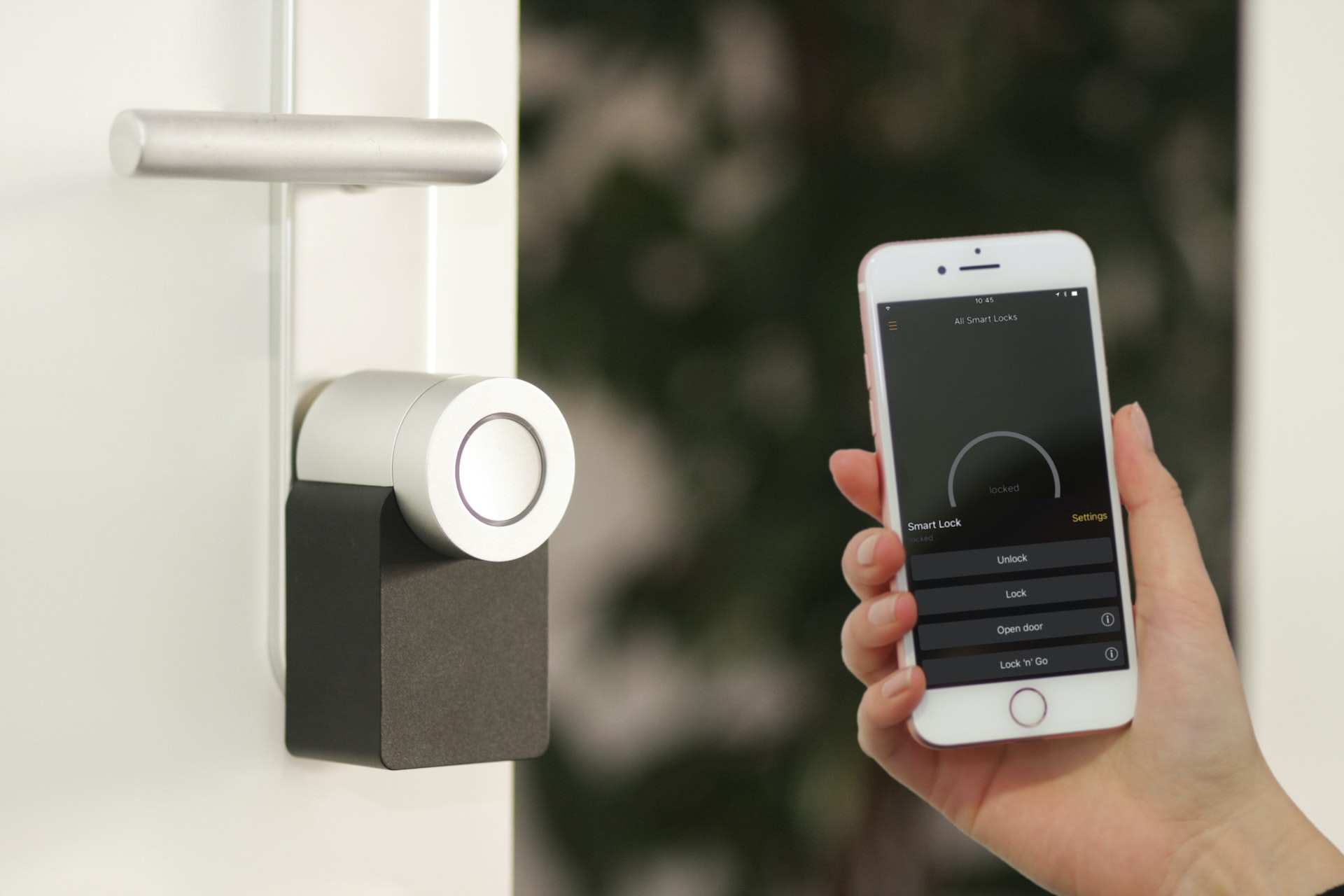What’s the buzz around IoT? Is it the same as your laptop and smartphone? If you ever heard of or even used an intelligent vacuum cleaner with remote control, you got acquainted with IoT.
How many connected devices are going to be in 2030? According to some projections, their number will reach 24 billion. Note that the world population plans to reach 8.5 billion by 2030. That is, for each person, there will be approximately 2.8 smart devices.
In simple terms, these are physical objects. But you don’t have to hold them in your hands or press a button every time you need to start the gadget. Instead, you can download an app and manipulate it as you wish.
IoT bears the potential to improve our lives and make the world a safer place. But what stands behind this technology? Here, I’ll lead you through IoT, how it works, what benefits it offers, and the challenges you need to bear in mind.
IoT question 1: What is IoT?
IoT denotes the Internet of Things. It’s a network of interconnected physical devices with unique identification.
What are these things? They are not just traditional platforms like PCs, laptops, and smartphones. They can be web-connected smart fridges, voice assistants, vacuum cleaners, and so on. Other examples of IoT devices are as follows:
- wearables;
- implants;
- vehicles;
- appliances;
- or any other connected device transmitting data in the network.
Any IoT system works on two principles: data collection and communication. The embedded systems in gadgets can:
- gather data about the environment;
- send data across a network;
- respond to remote orders;
- and act according to the pre-set scenarios.
And a human may not intervene in this process. Suppose we have a machine at a factory. It provides readings for workers to check, but it’s hard to collect consistent readings every minute of the day. Connecting it to the IoT, data collection becomes automatic.
Sensors may capture measurements such as machine intensity and temperature. But the information needs sharing between gadgets and professionals. And that’s where communication between the tools begins.
First, they send data for processing, which is frequently “on the cloud.” What technologies take place in this data transmission? They use Wi-Fi and Bluetooth.
Once the data is in the cloud, the program sends you notifications when needed, such as hourly updates and alarms if the device overheats.
How does it affect workers? They can save time on menial work and focus on other duties. Plus, proper equipment maintenance can predict malfunctions and avoid unnecessary downtime.
IoT question 2: What are the spheres of IoT implementation?
What were the earliest IoT adopters? It was spheres for whom it solved the most pressing needs, such as keeping track of remote valuable assets. Oil and gas companies, forestry, and mining were among the first IoT users.
As the technology evolved, other industries started to deploy IoT at increasing rates, including:
- transportation;
- retail;
- healthcare;
- the government.
The advantages of IoT for private use include:
- saving money and resources (e.g., smart thermostats);
- improving safety (e.g., intelligent locks and cameras);
- controlling health (e.g., fitness bracelets).
So IoT is infiltrating our personal and professional life. You can find it in almost every sector today, and these are some of its benefits.

1. IoT in online retail
Online store owners need to seek new ways of selling things as smartphones and laptops are already not enough. The interconnected home devices are now becoming touchpoints of communication with customers.
All your clients have to do is approach refrigerators, browse the store from a smart TV, or order Alexa to make a purchase. And this phenomenon is called headless commerce. That’s why retailers need to know the headless commerce platform cost to level up their business and guide their customers through a cohesive experience.
As for equipment maintenance, IoT can save perishable food and products, reduce waste, and optimize utility costs.
2. IoT in the healthcare industry: remote health monitoring
There are cases when sick people can get medical assistance from home. And sometimes it’s even better to avoid direct communication in hospitals.
That’s where various devices and applications can help. For example, remote monitoring allows doctors to analyze a patient’s health at any time. As another bonus, a person saves money and time on visiting the hospital.
3. IoT and Smart Cities
What does a smart city mean? It employs IoT technology to connect local services. So they become easier to get when needed, including:
- reduction of crime;
- optimization of public transportation and traffic flow;
- checking air quality and energy consumption.
As a result, city dwellers can improve their health, find parking lots, or free up some time by choosing the right routes.
IoT Question 3: What are the most difficult aspects of putting up an IoT system in place?
1. Security vulnerabilities

What will any security professional tell you about IoT drawbacks? The top headache is their vulnerability.
How is it possible? IoT devices have a large number of potential entry points. That’s what we call the “attack surface.” Cybercriminals get into a seemingly secure network that turns out to be completely unsafe.
As these devices are interconnected, hackers gain access to any data of this system. And they don’t need to steal a physical object nor crack a plastic cover. Many IoT devices contain simple default passwords.
You wouldn’t want your medical history or children’s videos to go public, would you? So if you don’t update your devices or get any security software, you put your enterprise and personal data at risk.
Users of IoT devices are responsible for resolving this issue. Admit it: How many different passwords do you set on your phones and social networks? Think of how fragile your business reputation may be.
2. Slow government regulation
Innovation growth can’t compare to the speed of government lawmaking. Suppose a criminal steals data for ransom. Enterprises don’t have critical information to continue their work.
But what can be worse? There is no law to protect them. Add the anonymity of payments in cryptocurrency here, and you’ll get a perfect cocktail for stealers. And these pitfalls hamper IoT implementation.
3. Lack of common IoT standards
IoT, like other technologies, is associated with numerous competitors vying for market share. It creates more choices for consumers, but few developers think about compatibility.
The standard for interoperability of IoT devices is Bluetooth and several competitors like Zigbee and Z-Wave. Thus, it will take time to establish a single universal standard for the Internet of Things.
Also, compatibility depends on whether users will upgrade their devices and install patches. So why do IoT consumers need to keep their devices up to date? The reason is that different software versions can impair performance and pose security problems.
To sum up
Why should we care about IoT? It’s essential for business prosperity, from growing oysters to developing a traffic control system. The best part of IoT is that you can implement it in almost any business idea.
Consumers will benefit from IoT with smart homes and health solutions. For example, they can control and change the degree of home lighting and heating from their phones. Or what if something changes in your body? You receive signals about the need to see a doctor.
Smart factories, in turn, will manage equipment and find flaws even before they become evident. Of course, nothing’s perfect, and IoT is not an exception. But with proper security updates and legislation, digital transformation will only raise productivity and satisfaction.
 Alex Husar is the Chief Technology Officer at Onilab with almost a decade of successful Magento migration and PWA development projects for eCommerce companies around the globe. Being a Computer Software Engineering specialist, Alex is equally competent both in terms of full-stack dev skills and the capability to provide project-critical guidance to the team.
Alex Husar is the Chief Technology Officer at Onilab with almost a decade of successful Magento migration and PWA development projects for eCommerce companies around the globe. Being a Computer Software Engineering specialist, Alex is equally competent both in terms of full-stack dev skills and the capability to provide project-critical guidance to the team.
TechNode Global publishes contributions relevant to entrepreneurship and innovation. You may submit your own original or published contributions subject to editorial discretion.
Featured image credits: Unsplash

